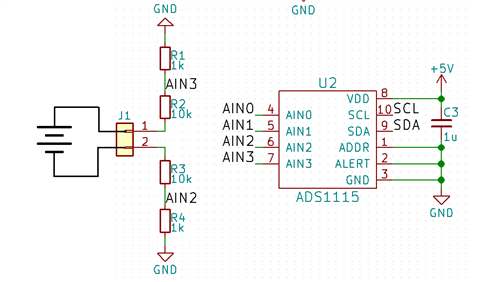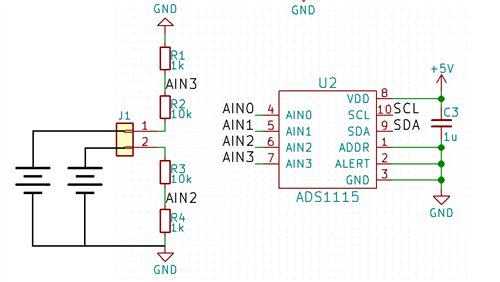As seen in the Schematic, I'm using a 1k/10k Voltage Divider to increase the Input Range of the ADS1115.
This setup works accurately at up to 5V on J1.
Above 5V, the Device consistently reports Voltages below the actual Value.
This effect increases with Voltage, at 6V the Error is about 0.2V, at 10V the Error is already 1V.
Can somebody tell me why this happens and how to fix it?



